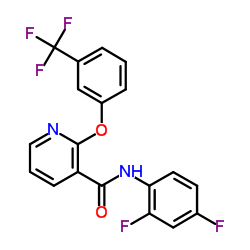Soil surface structure effect on isoproturon and diflufenican loss in runoff.
V Lecomte, E Barriuso, L M Bresson, C Koch, Y Le Bissonnais
文献索引:J. Environ. Qual. 30(6) , 2113-9, (2001)
全文:HTML全文
摘要
Because soil surface structure has a considerable influence on infiltration rate, the sealing process is postulated to have a significant effect on herbicide loss through runoff. We evaluated the effect of degraded soil surface structures on herbicide loss in runoff, and used the experimental data to test the uniform mixing zone concept and two-site sorption kinetics for modeling herbicide transfer to runoff. The experiments were done with simulated rainfall on 10-m2 plots in the field and 0.25-m2 plots in the laboratory after a surface application of 1.5 kg ha(-1) of isoproturon [3-(4-isopropylphenyl)-1,1-dimethylurea] and 0.187 kg ha(-1) of diflufenican [2',4'-difluoro-2-(alpha,alpha,alpha-trifluoro-m-tolyloxy) nicotinanilide]. Isoproturon (IPU) and diflufenican (DFF) concentrations were very high in the first runoff (up to 60 mg L(-1) for IPU and 2 mg L(-1) for DFF) when simulated rainfall was applied 24 h after the treatment. The concentrations decreased very rapidly with total rainfall depth. Degradation of the structural state of the soil surface increased the ratio of pesticide loss to application rate from 0.3 to 10% for IPU and from 0.7 to 7.8% for DFF for a runoff depth of less than 1 mm. The structural state of the soil surface influences the rapidity at which runoff begins after the onset of rain, and the runoff coefficient at steady state. Furthermore, the development of a surface seal seems to limit the depth of soil-runoff interaction and thus influences the dynamics of herbicide mobilization. Concentrations of IPU in the runoff were satisfactorily described with a model incorporating a uniform mixing zone and two-site sorption-desorption.
相关化合物
| 结构式 | 名称/CAS号 | 分子式 | 全部文献 |
|---|---|---|---|
 |
吡氟草胺
CAS:83164-33-4 |
C19H11F5N2O2 |
|
Multiresidue method for the determination of 13 pesticides i...
2011-09-15 [Talanta 85(3) , 1500-7, (2011)] |
|
Single drop microextraction and gas chromatography-mass spec...
2013-12-01 [Environ. Monit. Assess. 185(12) , 10225-33, (2013)] |
|
Rainfastness and adsorption of herbicides on hard surfaces.
2005-08-01 [Pest Manag. Sci. 61(8) , 793-8, (2005)] |
|
Spatial variation in the degradation rate of the pesticides ...
2006-01-01 [Environ. Pollut. 139(2) , 279-87, (2006)] |
|
Evolution of soil biological properties after addition of gl...
2009-07-01 [Chemosphere 76(3) , 365-73, (2009)] |